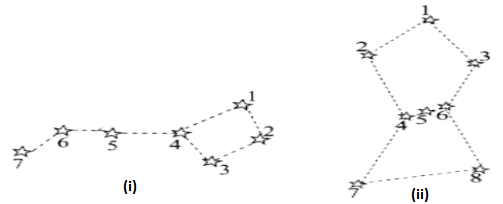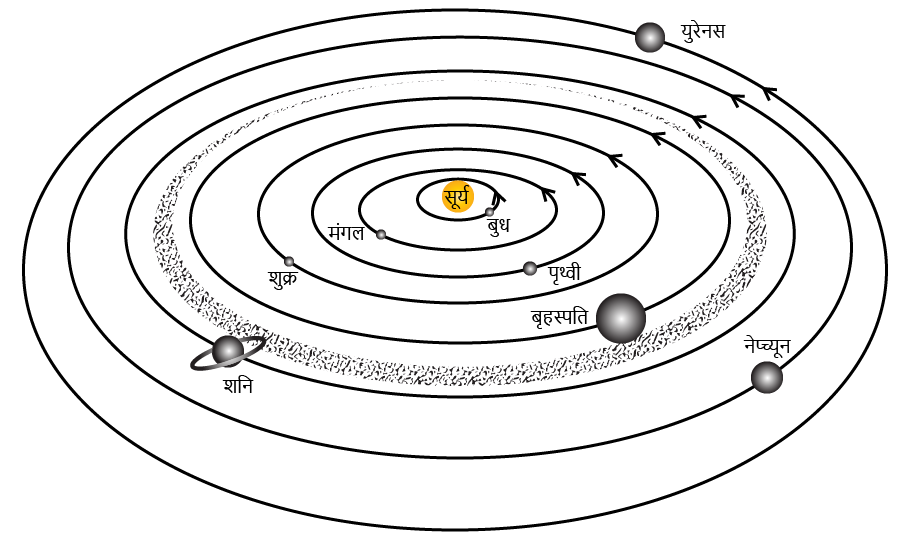Solved NCERT Questions For Class 8 Science Chapter 17 In Hindi - Free PDF
FAQs on NCERT Solutions For Class 8 Science Chapter 17 Stars And The Solar System in Hindi - 2025-26
1. Name the largest planet of the solar system.
Out of the 8 planets present in our solar system, Jupiter is the largest. Its size is almost twice that of all the other 7 planets combined. The characteristic stripes and patterns on Jupiter are actually clouds made of ammonia and water, floating in an atmosphere consisting of hydrogen and helium gases. The huge red spot photographed on the surface of the planet is a giant storm bigger than Earth.
2. What is a constellation? Name any two constellations.
According to NCERT, the stars in the night sky sometimes form a group that has a recognisable shape. This group of stars is called a constellation. You can easily spot these constellations in the sky as long as you are aware of the shape of the constellation. Some noticeable constellations are Ursa Major and Orion. Orion is one of the most magnificent constellations visible to us and consists of 7 to 8 bright stars.
3. What is a full moon day ?
We are all aware that the moon has various phases. The day on which the entirety of the moon is visible is known as the full moon day. After this day, more and more of the moon until finally, on the 15th day, the moon is no longer visible at all. This is called the new moon day. To know more about this, visit the page NCERT Solutions for Class 8 Science.
4. Can you see the back side of the moon from the earth ?
Since the moon does not produce its own light source and simply reflects the light of the Sun, the whole moon is never visible to us. Only the part of the moon upon which the light of the Sun is shining is seen to us from the Earth. Thus, it is practically impossible to see the back side of the moon from the Earth.
5. Is the NCERT Solutions for Class 8 Science Chapter 17 the best reference guide for the students?
With the help of NCERT Solutions for Class 8 Science Chapter 17 Stars and The Solar System, you can get all your doubts cleared in one go. Vedantu’s master teachers have made sure that these solutions act as the best reference guide for students and help them achieve all their targets. In case you ever have difficulty understanding a topic, you can directly contact experts too. And all the study material can also be accessed through the Vedantu app.




















